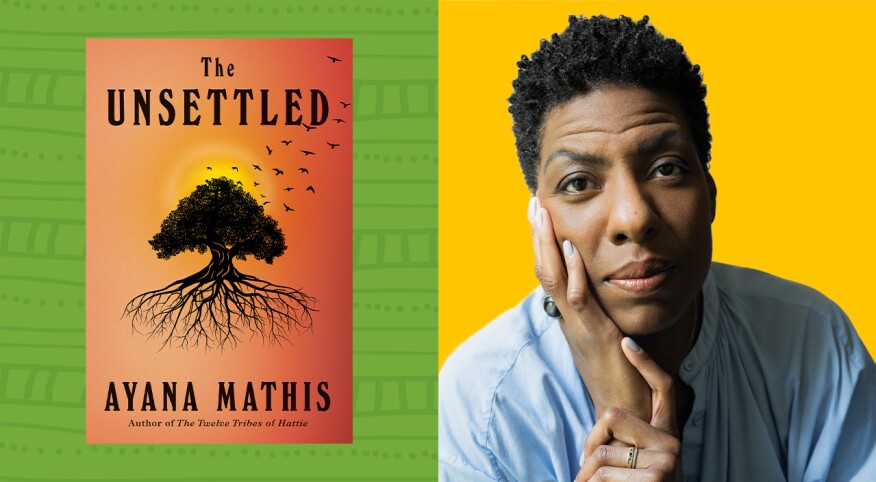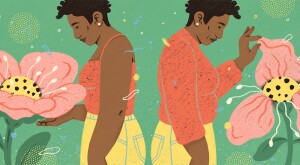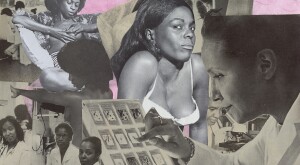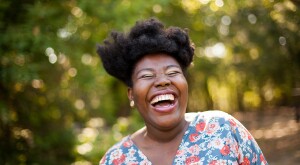Ayana Mathis, the best-selling author of The Twelve Tribes of Hattie, is back with an indelible multi-generational saga that Oprah Daily calls “Emotionally propulsive.” Below, I’ll share her publisher’s synopsis, my engrossing email chat with Mathis, and I’ll tell you how to enter for a chance to win a free copy!
From the publisher, Penguin Random House:
From the moment Ava Carson and her ten-year-old son, Toussaint, arrive at the Glenn Avenue family shelter in Philadelphia 1985, Ava is already plotting a way out. She is repulsed by the shelter’s squalid conditions: their cockroach-infested room, the barely edible food, and the shifty night security guard. She is determined to rescue her son from the perils and indignities of that place, and to save herself from the complicated past that led them there.
Ava has been estranged from her own mother, Dutchess, since she left her Alabama home as a young woman barely out of her teens. Despite their estrangement and the thousand miles between them, mother and daughter are deeply entwined, but Ava can’t forgive her sharp-tounged, larger than life mother whose intractability and bouts of debilitating despair brought young Ava to the outer reaches of neglect and hunger.
Ava wants to love her son differently, better. But when Toussaint’s father, Cass, reappears, she is swept off course by his charisma, and the intoxicating power of his radical vision to destroy systems of racial injustice and bring about a bold new way of communal living.
Meanwhile, in Alabama, Dutchess struggles to keep Bonaparte, once a beacon of Black freedom and self-determination, in the hands of its last five Black residents—families whose lives have been rooted in this stretch of land for generations—and away from rapidly encroaching white developers. She fights against the erasure of Bonaparte’s venerable history and the loss of the land itself, which she has so arduously preserved as Ava’s inheritance.
As Ava becomes more enmeshed with Cass, Toussaint senses the danger simmering all around him—his well-intentioned but erratic mother; the intense, volatile figure of his father who drives his fledgling Philadelphia community toward ever increasing violence and instability. He begins to dream of Dutchess and Bonaparte, his home and birthright, if only he can find his way there.
This giveaway has now ended. We'll have another one very soon. Be sure to check Sisters each week.
Author Ayana Mathis chats with Sisters
(This interview has been lightly edited.)
This is a very rich story about family and legacy. However, it almost feels like the land is an additional character in this book. Can you tell me about that?
Bonaparte, while fictional, is partially inspired by a real place called Gee's Bend, famous for its quilters. Some of these quilts are in museums and galleries all over the world. I spent time in Gee's Bend and was struck by its incredible natural beauty. Its history includes a legacy of Black land ownership and farming up through Jim Crow and beyond. Through research, I discovered independent Black towns and settlements, remarkable places that sprang up during Reconstruction after the Civil War. Some, like Mound Bayou in Mississippi, still exist. Some were cooperatives that pooled land, resources, and profits. I wanted to think about how places like that would shape the lives of people who might have lived in them—and the lives of those who left the settlements as they declined.
Land allowed these folks - and the people in my book - to have some degree of economic, bodily and psychic independence through years in which that was all but denied to Black people. In the book, Bonaparte is a spiritual homeland and a geographic one. So, in many ways, the relationship to land, to place and community, is a defining aspect of the characters. That includes the group in Philadelphia who attempt, though not very well, to make something like Bonaparte on a smaller scale. All are looking for a way to be free, looking for safety, for belonging and something tangible to leave their children.
Bonaparte was really joyous to write. The geography, the mystical elements of the place: there's one approach to it by land, another by water. A fire burns day and night to protect it. There are guards in the trees. That stuff was really fun to imagine.
The female characters are unforgettable. How did you bring them to life?
If I were to describe the book, I would say that it is about a mother, a mother, and a son. Both women love their respective children very deeply, but their lives are so unconventional, by choice or happenstance, that their children are sometimes in peril. Society has pretty rigid views about what a "good" mother looks like, so it was important that I really sit with these characters for a long time, so that they could have dimension and nuance. Readers may not agree with their choices-- these ladies do make some pretty bad choices sometimes! -- but my hope is that they are full human beings with whom we can empathize. This book took nearly 8 years, so I spent a lot of time with these women! They come to life because I was adding to them, little by little, layer by layer over the many years of writing the book.
Another thing that stands out in this novel are the many meanings of home. Sometimes a sense of home seems elusive. What inspired you as you evoked the settings and spaces?
I grew up in Philadelphia in the 1980s so the feel and sensibility of the city at that time is very much imprinted on me. At the same time, it was hard to write both of those Philly settings because they are so unfamiliar to most people. What I mean is that a homeless shelter for families may not call anything to mind for most readers, and certainly Ark, the utopic semi-commune isn't known territory either. I had really had to build those places from the ground up, because I couldn't rely on readers encountering these places with any degree of familiarity. I did a lot of reading and researching, and some site visits to different sorts of places. It sounds silly, but I looked at a lot of photographs and tried to imagine my characters into them.
This is a story steeped in heartbreak and hope. What does it feel like as a writer to be so deeply in touch with these emotions?
I had to take breaks for some significant periods because it could be pretty overwhelming. Writing, for me, is full immersion. It's very much all or nothing. It was important for me to replenish the well, so to speak. I read a lot. I cook, which is a very satisfying outlet for me. I look at art, I listen to music, I see movies and plays when I can. I also write a fair amount of nonfiction which exercises another part of my brain and is stimulating. But above all, nourishing myself with beauty was crucial.
How incredible was it to be compared to Toni Morrison after your first novel? Which authors inspire your work?
I've never gotten over it! Especially because she is a writer I return to again and again, as a companion, as a teacher, as a source of some of that beauty I mentioned in my previous answer. There are so many writers I really love, so it's impossible to name just a few but I would say: James Baldwin, enormously. Marilynne Robinson, Louise Erdrich. Poets like Anne Carson and Jericho Brown. I am also in divinity school, so I read a fair amount of theology and am deeply inspired by theologians like Catherine Keller and M. Shawn Copeland, among many others. I teach writing and I always tell my students that writers are readers first. And that's true, books have been guides and confidantes and dear friends all my life.
This giveaway has now ended. We'll have another one very soon. Be sure to check Sisters each week.











